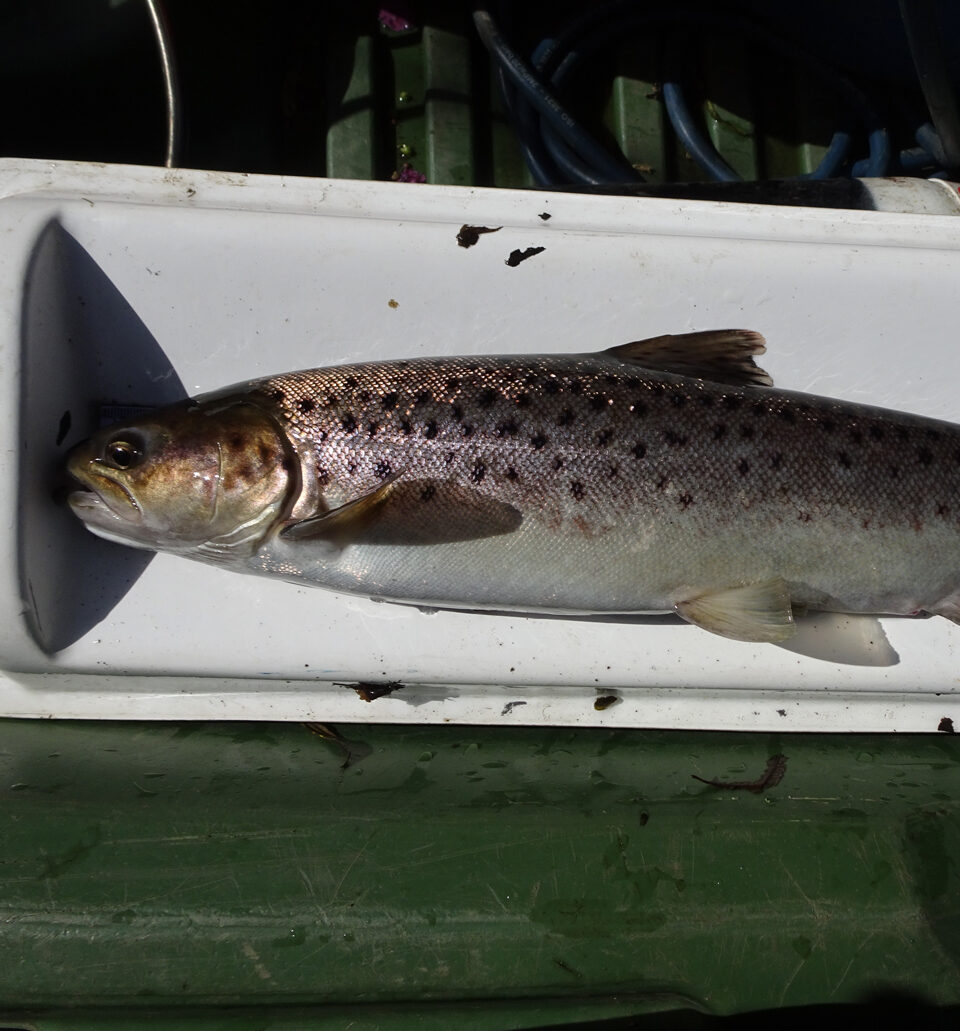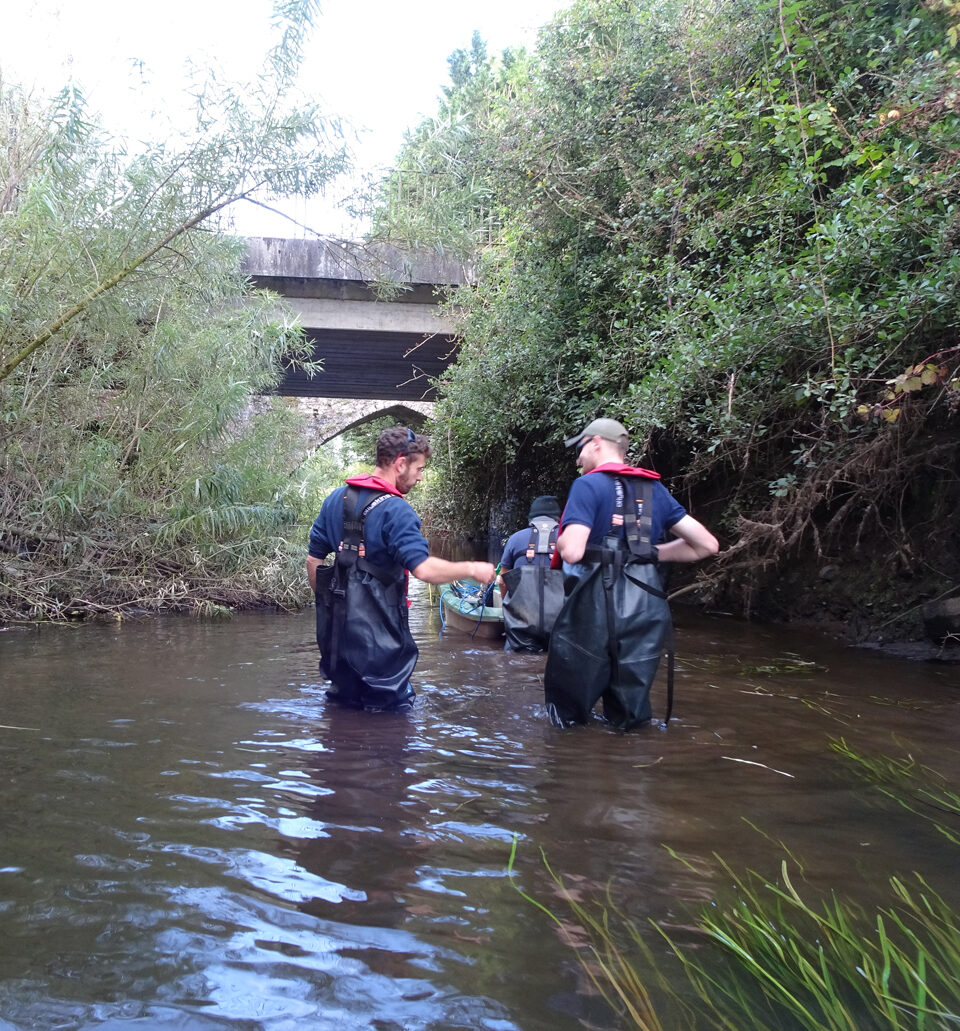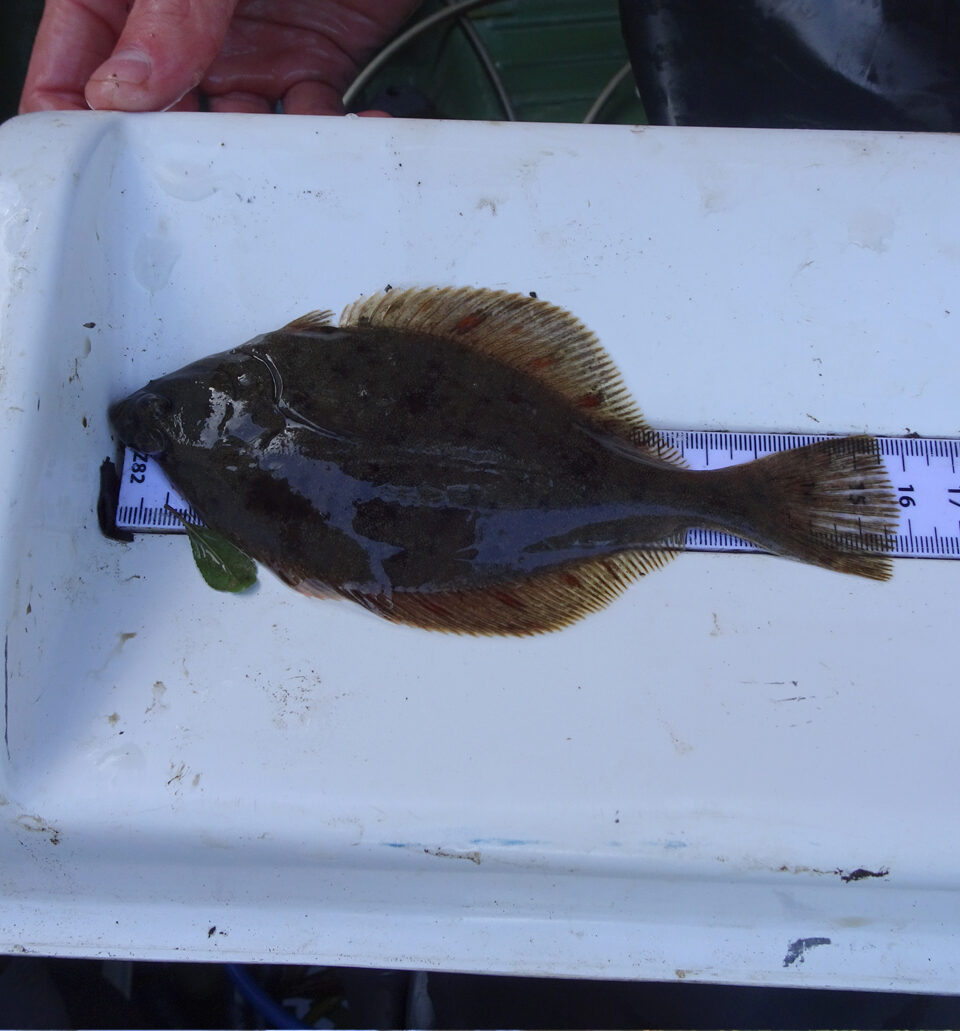Working closely with Mott MacDonald to design and deliver ecological and hydrometric monitoring on two rivers in South Wales.
The project formed part of an impact assessment of proposed alteration of discharges from several wastewater treatment works operated by Dŵr Cymru Welsh Water (DCWW). The project was comprised of three phases; desk study and walkover assessments; baseline biological data collection of the macroinvertebrate and fish communities; and reactive hydrometric monitoring across the project lifespan targeted at measuring the full range of flow conditions.

Project requirements
The problem
The environmental assessment required current, reliable and accurate data to ensure any wastewater management decisions were based on sound scientific evidence, protecting habitats and the species they support. Desk study and gap analysis determined that insufficient hydrometric and biological data was available, and design of a bespoke monitoring programme was required.
Minimal land access information was available to the team, with no guarantee that permissions would be granted on the time scales or spatial coverage required, posing a potential issue and delays to DCWW wider delivery of asset management programme at their wastewater sites.
Project timescales prohibited the installation of hydrometry and telemetry equipment, and in channel spot flow gauging would be required to meet the project milestones. It was also clear that to achieve the full range of Q values needed in these reactive upland rivers that responded very quickly to rainfall events, a highly flexible approach to planning was essential.

Our approach
The solution
Five Rivers worked in close partnership with Mott MacDonald staff in the field during initial site visits to; engage with landowners, agree land access, complete walkover scoping surveys and identify suitable electric fishing and macroinvertebrate survey points. The information gathered was used to design a monitoring programme that Five Rivers delivered which included; fully quantitative fish population assessment at 13 sites; spring and autumn macroinvertebrate kick sampling at 14 sites and analysis of samples to WFD species level TL5; level monitoring at two gauging board locations; and 16 visits to one location to undertake in channel flow measurements using Valeport flow meter.

Project outcomes
The results
Close engagement and partnership between our team of aquatic specialists and Mott MacDonald during walkover site visits secured access and permissions for the full spatial extent required which was not guaranteed, allowing for design of a robust monitoring scheme that met the objectives of the assessment and the regulator, reduced cost DCWW by using a collaborative approach to resourcing and reduced biosecurity risk by reducing the number of people and resources attending site.
All data was collected to the time scales required, including hydrometric monitoring between Q10 and Q95, to adequately calibrate the modelled flow duration curve. This also prevented data collection into the following year, providing the most accurate snap shot of the interaction between the aquatic ecology and proposed alterations to the hydrological regimes.
Monitoring confirmed that protected fish species were present within the impacted reaches of the two rivers. Atlantic salmon Salmo salar, juvenile lamprey and European eel Anguilla anguilla were all recorded. In addition, migratory sea trout Salmo trutta and the estuarine migrant flounder Platichthys flesus were also recorded in lower sites highlighting that potential impacts on SAC habitats and populations downstream may need to be considered in any assessment.
Our approach to guaranteeing quality, cost efficiency and also flexible resourcing revolved around ensuring we have the right resource with the right training ready for deployment. Our multi-disciplinary teams, with the skills and training required, ensured that our team could offer reactive visits for hydrometric monitoring, reduce costs of biological survey and sampling whilst not comprising data quality.
Contact us today.
Our services
Services implemented.

Contact us
Looking to talk to an expert?
Tom Grayling
Director of Monitoring & New Business
Get in touch by either phone or email to speak with Tom and discuss your needs.
Telephone: 01722 783 041

Thank you for booking.
To stay in touch, please sign up to our newsletter.
Return to five-rivers.com


